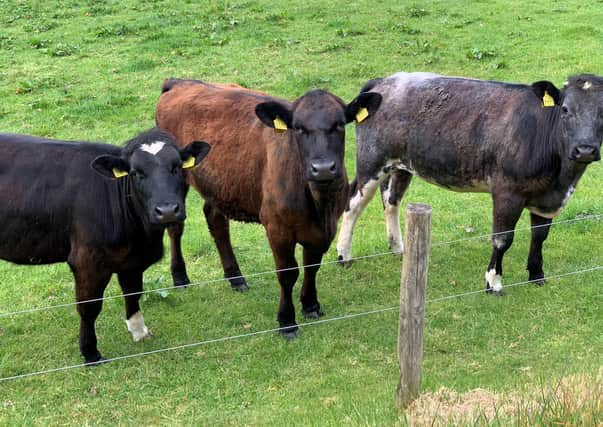IntelliBond: cost effective mineral solutions at grass


However, decreased concentrate intake at grass can result in lower or unbalanced vitamin and mineral supply.
Grass can be an unreliable source of minerals and levels vary throughout the season. For example, the copper content of grass tends to be low in spring and decreases even further as we move into the summer, before rising again in the autumn (as shown in Figure 1). Therefore, it is important to keep monitoring cattle for signs of mineral deficiency throughout the grazing season.
Advertisement
Advertisement
There are a few key signs of copper deficiency to look out for. Poor growth may be apparent or cattle may be simply not thriving. This can often be confused with worm or fluke burdens as there can even be a slight scour. An obvious sign to watch out for is coat health and colour, such as a dull, brownish-red coat (photo), or the classic “copper glasses”. It is crucial to identify copper deficiency as it is involved in many body functions such as iron absorption, the production of red blood cells and other important functions involved in the central nervous system, bones and heart.
Primary copper deficiency means there is a lack of Cu in the grass. However, secondary copper deficiency is more likely, and means copper levels are adequate, but there are other minerals present (such as molybdenum) that bind to copper and prevent it from being absorbed properly.
It is more likely to see copper deficiency in pastures that have undergone improvements such as draining or in those sown with sulphur fertilisers or lime. The copper antagonist or binder, molybdenum, is at highest concentrations in alkaline soils (pH greater than 6.5).
The most consistent way to supplement minerals is through compound feed, as this is carefully controlled. The traditional minerals in feeds are readily available and susceptible to being bound to other minerals. Relying completely on these sources could reduce the amount of trace mineral available to cattle.
Advertisement
Advertisement
Protected minerals ensure improved delivery compared to traditional sources. Trouw Nutrition offers an alternative. IntelliBond® hydroxy trace minerals are not the same as standard protected minerals. IntelliBond minerals have a naturally occurring, crystalline structure and are very palatable. They have very low solubility in the rumen, which means they are not digested here, but instead pass through to the small intestine for digestion. This prevents the minerals from being ‘locked up’ by others in the rumen and they are digested and absorbed more efficiently.
When minerals are digested in the small intestine, cattle obtain better use of the minerals fed. This means IntelliBond provides a much more cost-effective approach to mineral supplementation, and in most cases, the total mineral levels of the diet can be reduced. Ask your nutritionist if there are IntelliBond minerals in your compound feed.
In summary, continue to monitor cattle for mineral deficiency at grass. Remember, the mineral content of grass varies greatly throughout the grazing season. If a deficiency or imbalance is suspected, seek advice and consider including IntelliBond minerals to achieve much better availability, and results.